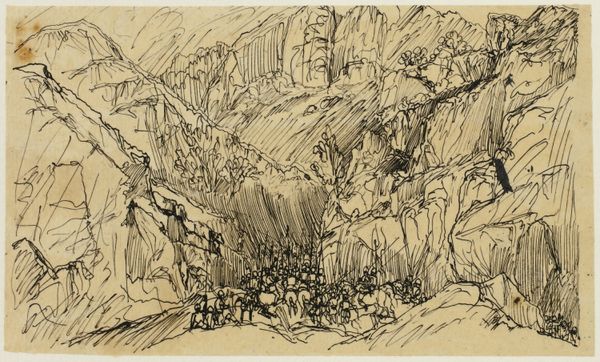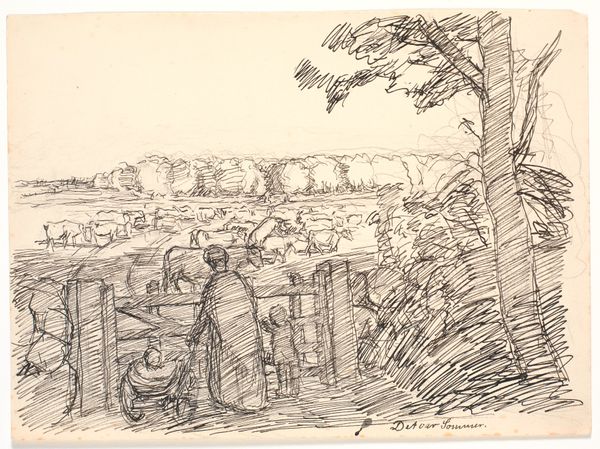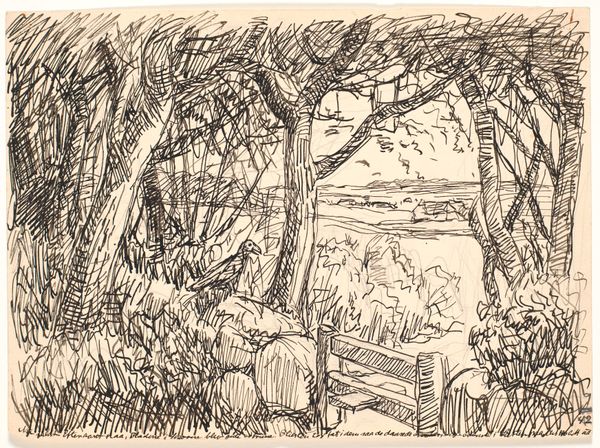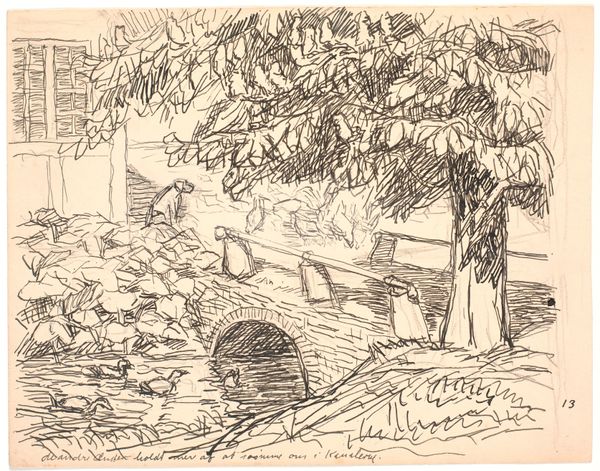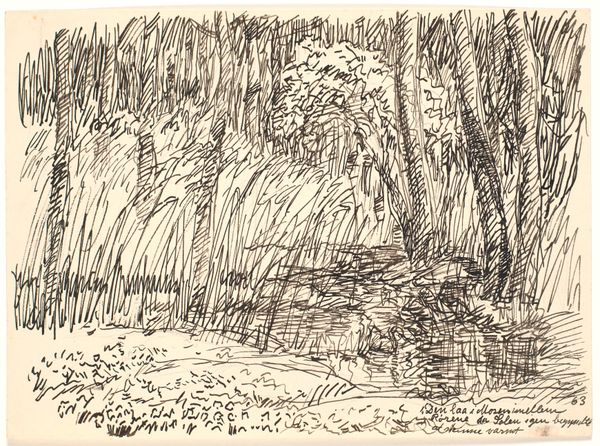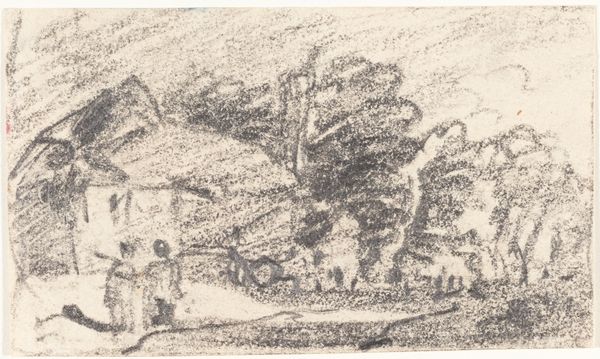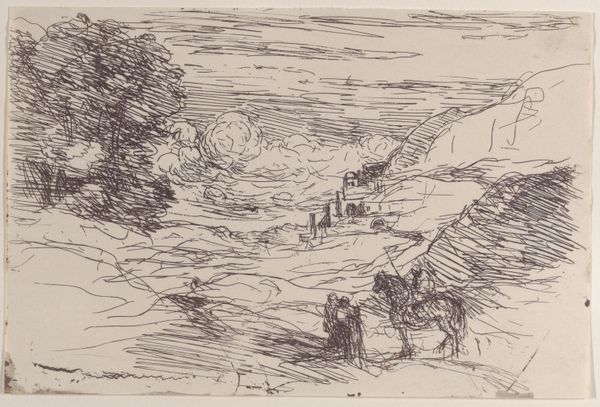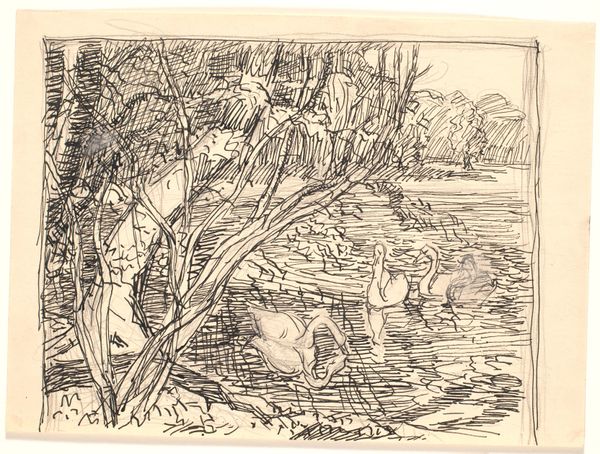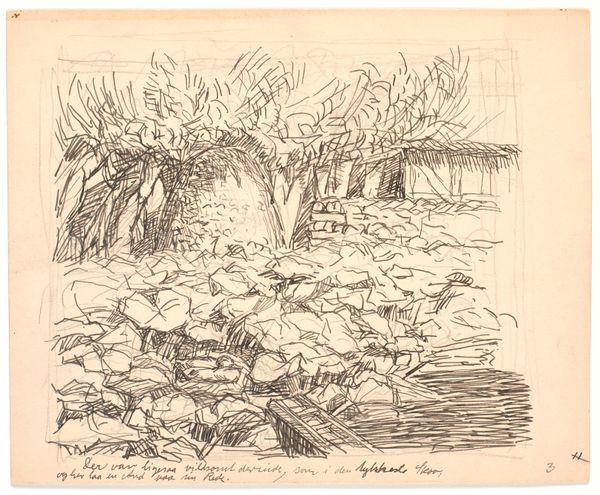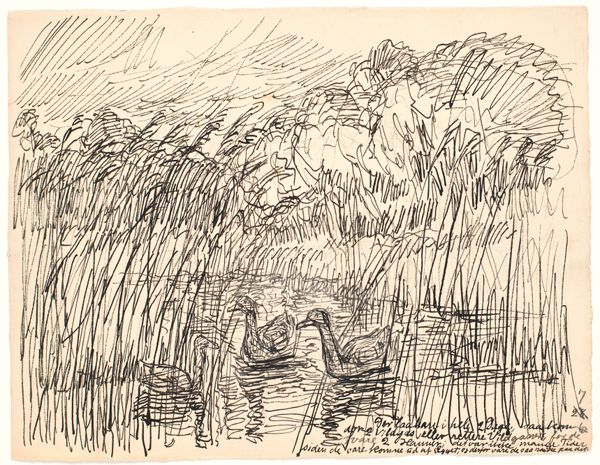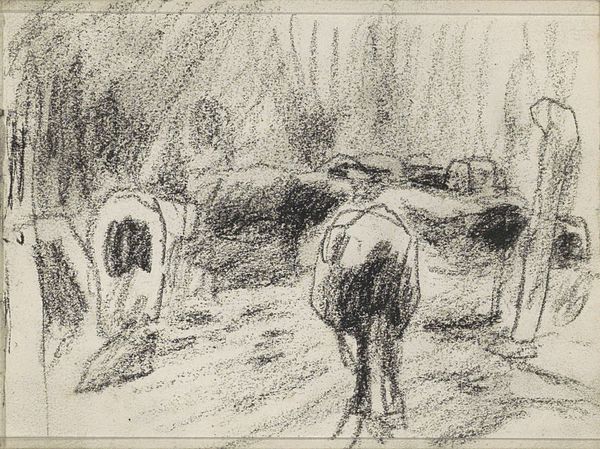
drawing, ink, pen
#
drawing
#
ink drawing
#
pen drawing
#
neat line work
#
pen illustration
#
pen sketch
#
landscape
#
ink line art
#
linework heavy
#
ink
#
pen-ink sketch
#
thin linework
#
pen work
#
pen
#
naturalism
Dimensions: 255 mm (height) x 329 mm (width) (bladmaal)
Editor: We’re looking at Fritz Syberg’s "Her laa den hele Natten..." made in 1928, an ink drawing. There’s a raw, almost urgent energy in those lines. What is your take? Curator: That urgency speaks to a broader societal shift. Post-World War I, many artists turned away from romanticism toward a grittier realism, reflecting the anxieties of the time. Does the scene itself, with its repetition of what appears to be haystacks or some sort of storage, strike you as particularly Danish? Editor: Well, it’s a rural landscape, very specific in its… practical purpose, almost? A place of work, rather than leisure. Do you see Syberg trying to make some kind of social comment? Curator: It is quite possible. Naturalism, which heavily influences Syberg, was often employed to depict the lives of working people, often in ways that highlighted the disparity between them and the wealthy class. Also, the title in translation, "Here It Lay All Night..." sounds… ominous? Do you see any particular social critique in the composition? Editor: I am unsure. The haystacks are really visually interesting in contrast to the trees; everything’s regimented down low and free-flowing above. But there are too many possible interpretations. What would have motivated someone to create something like this, beyond personal expression? Curator: Well, beyond any potential social message or commentary, consider the public function of art in interwar Denmark. Artists often depicted rural life as a way to build a sense of national identity, particularly during times of uncertainty. Perhaps Syberg sought to both idealize, while truthfully depicting, that life, using the naturalistic aesthetic to speak to people during this difficult moment. Editor: So, this piece is maybe less about explicit protest and more about subtle cultural negotiation. Thanks, that framing helps me to contextualize the image and my personal response. Curator: Exactly! Recognizing how socio-political currents shaped artistic choices is crucial.
Comments
No comments
Be the first to comment and join the conversation on the ultimate creative platform.


